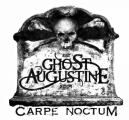Myths & Legends Part Seven
The Hag
A hag, or “the Old Hag”, was a nightmare spirit in British and Anglophone North American folklore. This variety of hag is essentially identical to the Anglo-Saxon mæra — a being with roots in ancient Germanic superstition, and closely related to the Scandinavian mara. According to folklore, the Old Hag sat on a sleeper’s chest and sent nightmares to him or her. When the subject awoke, he or she would be unable to breathe or even move for a short period of time. Currently this state is called sleep paralysis, but in the old belief the subject had been hagridden.It is still frequently discussed as if it were a para-normal state.
In Irish and Scottish mythology, the Cailleach is a hag goddess concerned with creation, harvest, the weather and sovereignty.In partnership with the goddess Brìde, she is a seasonal goddess, seen as ruling the winter months while Brìde rules the summer.In Scotland, a group of hags, known as The Cailleachan (The Storm Hags) are seen as personifications of the elemental powers of nature, especially in a destructive aspect. They are said to be particularly active in raising the windstorms of spring, during the period known as A Chailleach.
Hags as sovereignty figures abound in Irish mythology. The most common pattern is that the hag represents the barren land, who the hero of the tale must approach without fear, and come to love on her own terms. When the hero displays this courage, love, and acceptance of her hideous side, the sovereignty hag then reveals that she is also a young and beautiful goddess.
The Three Fates (particularly Atropos) are often depicted as hags.
In Persian folklore, the Bakhtak has the same role as that of “the Old Hag” in British folklore. The Bakhtak sits on a sleeper’s chest, awakening them and causing them to feel they are unable to breathe or even to move. Bakhtak also is used metaphorically to refer to “nightmare” in the modern Persian language.
Many stories about hags seem to have been used to frighten children into being good. Peg Powler, for example, was a river hag who lived in river trees and had skin the color of green pond scum. Parents told their children that if they got too close to the water she would pull them in with her extra long arms, drown them, and sometimes eat them. The parents hoped that the children would be afraid of the hag so they wouldn’t go anywhere near the water. That way, they’d never fall in and drown. Peg Powler has other regional names, such as Jenny Greenteeth from Yorkshire and Nellie Longarms from several English counties.
Many tales about hags do not describe them sufficiently to make it clear whether the tale deals with an old woman who has learned magic or a supernatural being.
